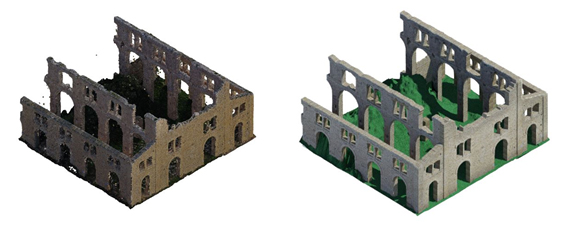Acquisition and management of historical buildings data: from survey to the construction of the HBIM model
Keywords:
Survey, HBIM, Cultural Heritage, 3D modelling, TLS, UAV, photogrammetryAbstract
The procedures for the acquisition and management of building data, in recent years, have been revolutionised both by the technologic development of survey and restitution tools, that offers new possibilities on photogrammetric digital reconstruction, and by the new methods of project and building management. Considering this last field, the emerging BIM (Building Information Management) methodology, based on the implementation of libraries composed of parametric objects, allows the design and management of a building in its various aspects, incorporating all the necessary information, also from surveys, into a single management database of a building project. Recently, the completeness provided by the IFC (Industry Foundation Classes) standard has made BIM methodology extremely interesting to apply for the management of existing buildings, and in particular for historic buildings. In this latter case, the great variety of Cultural Heritage present on the European territory, and the ability of BIM to be able to map the building both from the geometric and semantic point of view, have stimulated the development of HBIM (Historic BIM) models. In the specific case, the operating methods of surveying and restitution are closely linked to the operational needs, depending on the architectural and physical aspects of the building, the accessibility of the site and the purposes of the model. The construction of an HBIM model, in fact, must take into account a series of problems due to the complexity of the parts, their fragmentation or incompleteness, and the difficult parameterisation of the objects. In the light of these problems, various aspects related to the survey phase and the restitution of an HBIM model are analysed in this work, inspired by some practical examples, in order to define a "modus operandi" to follow, closely linked to the possible variables and requirements that characterise this methodology.
Downloads

Downloads
Published
How to Cite
Issue
Section
License

This work is licensed under a Creative Commons Attribution-ShareAlike 4.0 International License.



